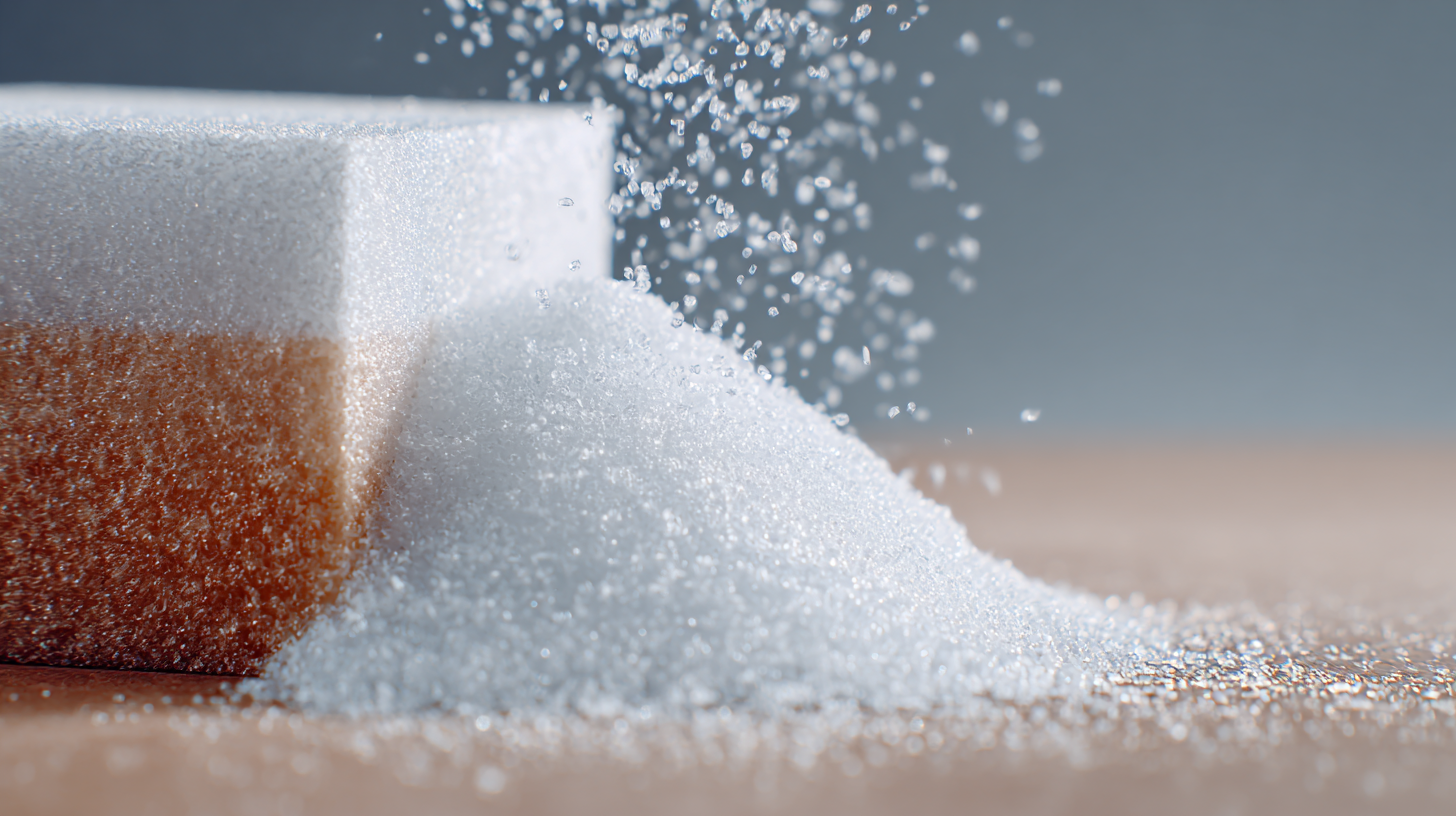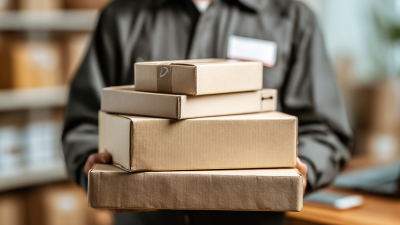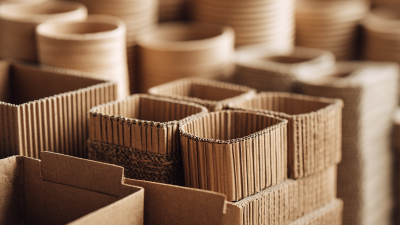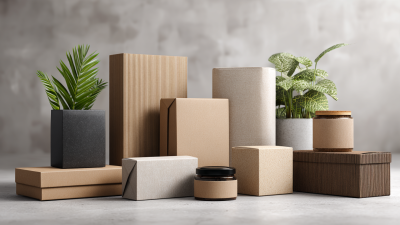The shipping industry is undergoing a significant transformation, driven by advancements in materials science and an increasing awareness of environmental sustainability. Foam packaging, a lightweight and versatile solution, has emerged as a critical component in protecting goods during transit. According to a report by Smithers Pira, the global foam packaging market is projected to reach $50 billion by 2024, reflecting its rising importance in various sectors, including e-commerce and electronics. While foam packaging offers exceptional cushioning and insulation properties that minimize damage and waste, its environmental implications cannot be overlooked. As studies from the Environmental Protection Agency (EPA) highlight, a considerable percentage of plastic waste in landfills comes from such materials, calling for innovative alternatives and effective recycling methods. This article explores the science behind foam packaging, its transformative role in shipping logistics, and the ongoing efforts to mitigate its environmental impact.

 Foam packaging has become a cornerstone in the shipping industry due to its superior protective qualities and lightweight nature. It typically consists of materials such as polystyrene, polyethylene, and polyurethane, each offering distinct benefits.
Foam packaging has become a cornerstone in the shipping industry due to its superior protective qualities and lightweight nature. It typically consists of materials such as polystyrene, polyethylene, and polyurethane, each offering distinct benefits.
Polystyrene foam, known for its rigidity, is commonly used for cushioning delicate items, while polyethylene foam's flexibility makes it ideal for irregularly shaped products. Polyurethane foam, on the other hand, excels in shock absorption, making it a preferred choice for fragile electronics.
The production processes behind foam packaging vary depending on the type of material used. For instance, expanded polystyrene (EPS) is created through the expansion of polystyrene beads, which can be molded into various shapes. In contrast, polyethylene foam is produced through extrusion, where materials are heated and forced through a shaped die to create continuous sheets.
These production methods not only influence the physical properties of the foam but also determine its environmental impact, as some processes are more sustainable than others. As the industry evolves, there is a growing focus on developing biodegradable and recyclable foam options to mitigate environmental concerns associated with traditional foam materials.
The environmental impact of foam packaging is a critical issue in the discussion on sustainable shipping solutions. Recent studies emphasize the importance of lifecycle assessment (LCA) to understand the true ecological footprint of foam-based products. While foam packaging can offer protection and efficiency during transit, its environmental costs cannot be overlooked. Lifecycle assessments indicate that, despite being lightweight and recyclable, foam products often contribute to significant pollution during production and disposal phases.
Tips: Consider using biodegradable alternatives to traditional foam packaging wherever possible. Exploring innovative materials, such as bio-based polyols derived from food waste, can further enhance sustainability in packaging solutions. Companies must stay informed about evolving packaging regulations, especially as lawmakers push for stricter environmental guidelines.
As we move towards a more sustainable shipping industry, integrating LCA methodologies into product development will be essential. Comparing the environmental impacts of various materials, including expanded polystyrene and polyethylene terephthalate foam, allows businesses to make informed decisions. Ultimately, adopting a science-based approach in the packaging debate will drive innovation and reduce the environmental footprint of shipping practices.
Innovations in foam recycling are gaining momentum within the packaging industry, driven by an urgent need to address environmental concerns associated with plastic waste. Despite only 14% of plastic packaging being recycled worldwide, various companies are prioritizing circular packaging solutions for their dual benefits: enhancing brand value and mitigating environmental impact. The commitment to innovative recycling strategies is not just an ethical decision but increasingly seen as a profitable business model.
The EPS (expanded polystyrene) sector is witnessing improvements in recycling rates, with claims from industry stakeholders that advancements are being made even amidst regulatory challenges. Partnerships and collaboration are key to optimizing foam recycling processes, as illustrated by industry veterans sharing insights on successful initiatives that have transformed waste management practices. The growing demand for sustainable products is reflected in the expanding polystyrene market, indicating a positive shift towards embracing sustainability while leveraging advanced recycling methods to foster economic growth.
| Dimension | Details |
|---|---|
| Material Types | Polyurethane, Polystyrene, Expanded Polypropylene |
| Recycling Rate | Approximately 9% for foam packaging |
| Environmental Impact | Can take hundreds of years to decompose |
| Innovative Recycling Techniques | Chemical recycling, mechanical recycling, and upcycling |
| Challenges in Recycling | Contamination, collection inefficiencies, and high processing costs |
| Success Stories | Companies entering circular economy initiatives |
| Future Trends | Biodegradable foams and innovations in sustainability practices |
The choice of packaging materials significantly impacts shipping efficiency and environmental sustainability.
 Foam packaging, known for its lightweight and cushioning properties, provides excellent protection for fragile items during transit. Its ability to absorb shocks minimizes the risk of damage, reducing returns and replacements, which can be costly for businesses. However, the environmental implications of foam production and disposal cannot be overlooked. Traditional polystyrene foam is not biodegradable and poses challenges in waste management, leading to a growing concern about its long-term ecological footprint.
Foam packaging, known for its lightweight and cushioning properties, provides excellent protection for fragile items during transit. Its ability to absorb shocks minimizes the risk of damage, reducing returns and replacements, which can be costly for businesses. However, the environmental implications of foam production and disposal cannot be overlooked. Traditional polystyrene foam is not biodegradable and poses challenges in waste management, leading to a growing concern about its long-term ecological footprint.
In contrast, alternative materials such as biodegradable packing peanuts, recycled paper, and molded pulp offer eco-friendly solutions while still ensuring protection for shipped goods. These materials often come from sustainable sources and can decompose naturally, minimizing their impact on landfills. Moreover, advancements in bioplastics are leading to options that provide similar cushioning effects as foam without the detrimental environmental effects. As businesses strive to enhance their sustainability profiles, a comparative analysis of foam packaging and these alternatives reveals critical trade-offs in shipping efficiency and environmental responsibility, encouraging a shift towards more sustainable practices in the shipping industry.
In recent years, the regulatory landscape surrounding foam packaging has undergone significant changes, particularly in the shipping sector. As concerns over plastic waste intensify, various local and national governments have implemented bans or restrictions on the use of polystyrene foam packaging. According to a report by the Environmental Protection Agency (EPA), approximately 30 million tons of plastic waste is generated annually in the U.S., with foam packaging comprising a substantial portion. This shift in regulations prompts shipping companies to seek alternatives, such as biodegradable materials and innovative protective packaging solutions that align with sustainability goals.
Furthermore, the economic impact of these regulatory changes cannot be overlooked. A study by the Sustainable Packaging Coalition indicates that transitioning away from traditional foam packaging could result in increased costs for shipping companies, with estimates suggesting a rise of 15-20% in packaging expenses. However, this shift also presents opportunities for innovation in packaging design and materials, potentially fostering a new market for sustainable products. Stakeholders in the shipping industry must navigate these evolving regulations while balancing cost implications and environmental responsibility, ultimately contributing to a more sustainable future in logistics.






Get Free Estimate!

